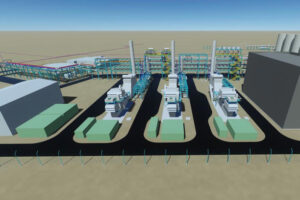New windows could generate massive energy savings in buildings
Researchers at the University of Exeter have received funding to create new windows and facades that could save energy in buildings by reducing heat loss and maximising sunlight.
Currently, energy consumed by buildings for heating, cooling and lighting accounts for more than 40% of their CO2 emissions, and a substantial portion of this energy is lost through window and glass building facades.
The new technology is hoped to not only significantly reduce this energy demand with each building but also create a way to retrofit buildings in a cost-effective way.
The new smart glazing technology will restrict the incoming and outgoing heat. In the winter, the material will be able to absorb heat from the sun and transfer and store it for use within the building and in summer, the same material can be used to regulate the glass transparency to control the indoor temperature, and so reduce the need for air conditioning.
The project has received a £1.65m grant from the Engineering and Physical Sciences Research Council (EPSRC) under the End User Demand scheme.
Dr Asif Tahir, project lead and from Exeter’s Renewable Energy department said: ‘The overarching goal of energy efficacy and visual comfort will be achieved developing new technology based on an optimised matrix of multi-fold smart composite in which each element of composite will bring a unique property to composite to contribute to enhancing the energy efficiency of windows and facades at an acceptable cost.
‘The outcome of this research will enable us to create technological pathways towards achieving energy-positive buildings in the UK.’
Professor Tapas Mallick, also from the Renewable Energy department added: ‘This funding is excellent news for the department and shows our outstanding research in the area of low energy building.
‘Through this funding and our participation into the UK Centre for Research on Energy Demand, led by Oxford University, this provides an excellent opportunity to show our impact on the low energy building research to the national stakeholders.’
Photo Credit – Pixabay















